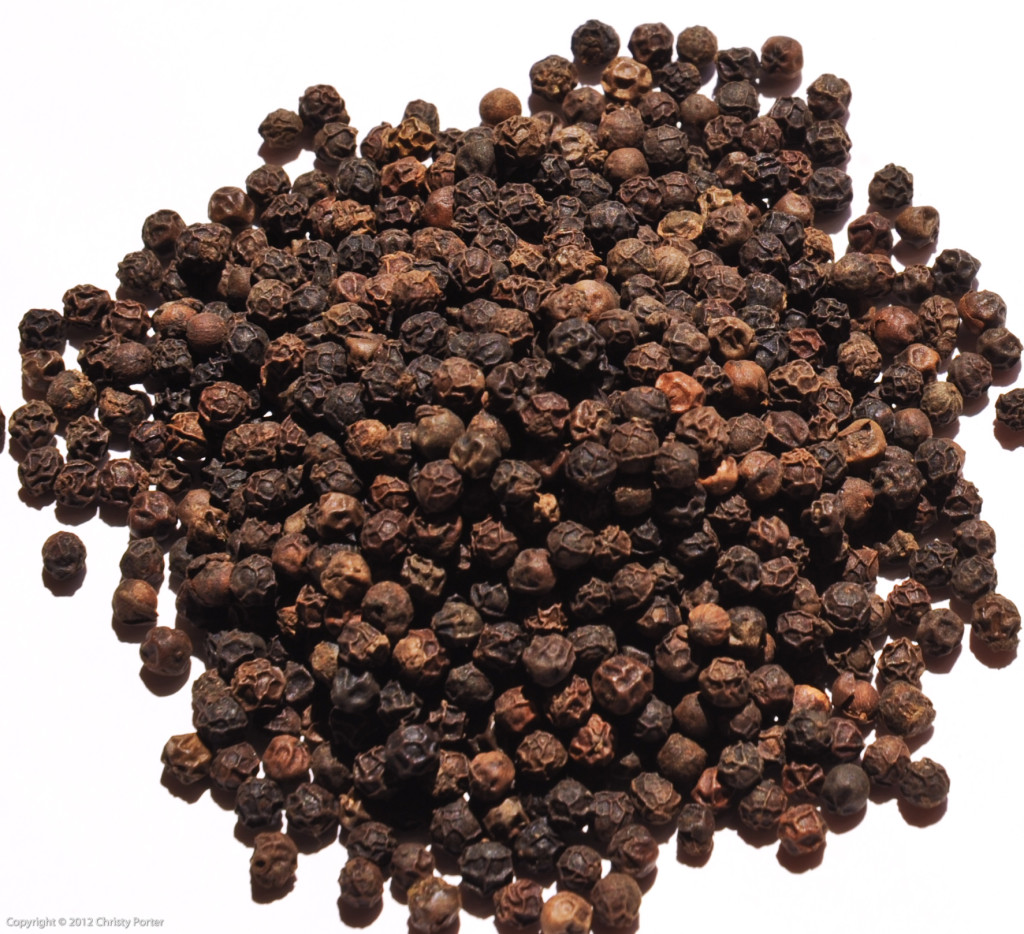
21 Black Pepper Facts You Didn’t Know

Next time you find yourself winning at a game of trivia, you can thank me for your Black Pepper spice knowledge.
1. Black Pepper comes from the dried fruit peppercorn (piper nigrum). It grows on a perennial flowering vine.
2. The plant is particular about soil conditions and thrives in soil that is not too dry and not too wet.
3. Pepper is typically cultivated in tropical regions and is native to south India.
4. Accounting for about 20% of the monetary value of the world’s spice trade, Black Pepper is mainly produced in India, Vietnam, Brazil and Indonesia.
5. The United States is currently the biggest consumer of Pepper, importing 671 million dollars of Pepper in 2009. That’s 18% of the world’s Pepper.
6. For the first time, India is now a net Pepper importer because of rising consumption among the growing middle class. Read more about Pepper’s rising cost here.
7. When the plants reach maturity, Peppercorns are stripped from the stem and then boiled for a couple minutes before drying in the sun for several days. They are then flash dried.
8. Black Peppercorns are green when harvested, and change color while drying.
9. The distinctive Pepper taste is a result of the chemical pepperine found in the white center of the Peppercorn.
10. White Peppercorns are Black Pepper without skin.
11. The most expensive Red Peppercorn variety occurs when the berries are left on the vine for longer than normal.
12. Ground table Pepper is typically 70% black and 30% white. However, the good stuff is 50/50.
13. Black Pepper represents about 50% of a typical restaurant’s spice usage.
14. Mesh size describes how fine a ground spice is. For example, a typical table ground Black Pepper is 18 to 28 mesh. Learn more about mesh size here.
15. Tellicherry Garbled Extra Bold (TGEB) is how we buy the finest Black Pepper in the world. Garbled means unsized.
16. Pepper is rich in both vitamin A and C. Black Pepper also has a very high caffeine content.
17. Pepper loses its flavor and aroma through evaporation. Keep it in an airtight container and out of the sun.
18. For the best flavor, buy Whole Peppercorns and grind right before eating.
19. Pepper has been used in cooking for over 4,000 years. Pepper was placed in Egyptian tombs to accompany the pharaohs over 2,500 years before Christ.
20. When the Visigoths sacked Rome, they demanded 3,000 lbs of Black Pepper (in addition to gold and silver) as ransom.
21. During the Middle Ages, Peppercorns were worth more than silver in weight.
Sources:
25 years spice industry experience
The Book of SPICES by Frederic Rosengarten, Jr.
World Trade Daily





My recipe called for 20 black pepper corns. I had none. All I had was groundpepper. Couldn’t substitue because I could not find the average weight of a single pepper corns. I could not find the number of pepper corns in a teaspoon or Tablespoon. I had no reference point to extrapolate or proportion 20 pepper corns. Am I out of my mind for even trying? Or the one who wrote the recipe is the one of his mind? I am guessing one of my two Chefs wrote it. Either the Chef Owner or the Executive Chef (E.F.) wrote it. When my E.F. saw me searching the internet he pointed out to the new jar of pepper corns. I am still trying to find out why I could not find such a simple info in the Net. I didn’t look too hard. Just one or two searches, scanned the first few hits. Found nothing. But I found you.
Would you care to elaborate? I am in Seattle WA BTW in case you needed to know.
That was something good to know look like it should be posted on cans of pepper bottles of pepper people love black pepper and then they wonder why they’re staying up and it’s not the coffee it’s the black pepper how about that
No, black pepper does not contain caffeine. Caffeine is mainly found in coffee, tea, and some soft drinks, but it’s not a component of black pepper.
Black pepper and caffeine are distinct compounds that are found in different types of plants.Black pepper is derived from the berries of the Piper nigrum plant. The active compound in black pepper that gives it its characteristic flavor and pungency is called piperine, not caffeine.Caffeine, on the other hand, is a natural stimulant found in a variety of plants, including coffee (Coffea species), tea (Camellia sinensis), and kola nuts (Cola species). It is well-known for its stimulating effects on the nervous system.The molecular structures, properties, and effects of piperine and caffeine are different, and there is no scientific evidence to suggest that black pepper contains caffeine. This information is consistent with standard food science literature, reference materials, and educational resources on the subject.